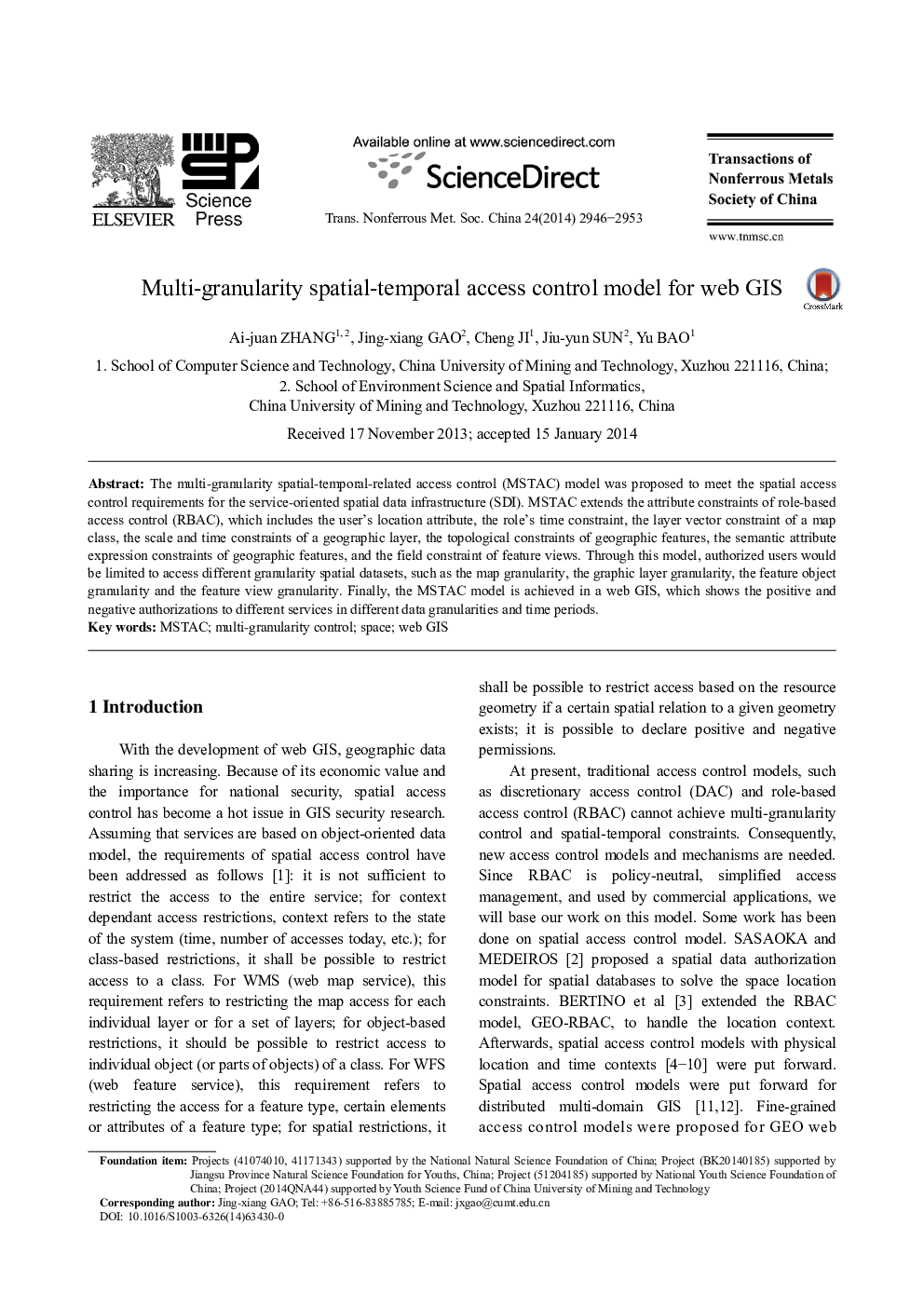| Article ID | Journal | Published Year | Pages | File Type |
|---|---|---|---|---|
| 1636976 | Transactions of Nonferrous Metals Society of China | 2014 | 8 Pages |
Abstract
The multi-granularity spatial-temporal-related access control (MSTAC) model was proposed to meet the spatial access control requirements for the service-oriented spatial data infrastructure (SDI). MSTAC extends the attribute constraints of role-based access control (RBAC), which includes the user's location attribute, the role's time constraint, the layer vector constraint of a map class, the scale and time constraints of a geographic layer, the topological constraints of geographic features, the semantic attribute expression constraints of geographic features, and the field constraint of feature views. Through this model, authorized users would be limited to access different granularity spatial datasets, such as the map granularity, the graphic layer granularity, the feature object granularity and the feature view granularity. Finally, the MSTAC model is achieved in a web GIS, which shows the positive and negative authorizations to different services in different data granularities and time periods.
Related Topics
Physical Sciences and Engineering
Materials Science
Metals and Alloys
Authors
Ai-juan ZHANG, Jing-xiang GAO, Cheng JI, Jiu-yun SUN, Yu BAO,
